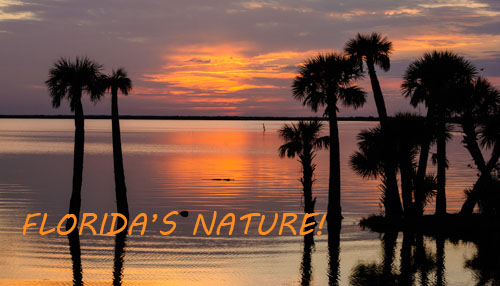
Rich with natural diversity
Florida is host to 81 distinct naturally occurring plant and animal communities that are in turn home to over 4,700 species of plants, 300 plus species are found nowhere else in the world. Many of these are classified as rare, threatened, or endangered.
Where there is water there is life - Florida has an amazing amount of both saltwater and freshwater related features - more than 1,800 miles of ocean coastline (not including the barrier islands), over 8,460 miles of tidal shoreline that in turn creates approximately 2,000 square miles of coastal saltwater marshes and mangroves. 18,500 plus square miles of various inland freshwater wetlands, and more first and second magnitude springs (27) than any other state in the U.S..
Florida is also the only state in the continental United States with an extensive coral reef system. These reefs extend from the Dry Tortugas National Park (west of Key West) northward along the east coast to the St. Lucie Inlet in Martin county. John Pennekamp Coral Reef State Park is a 70 mile strech of these reefs located off Key Largo, a popular scuba diving destination.
With 25,000 square miles of forests and climate zones ranging from a tropical climate at the southern end of the state transistioning to a temperate climate at the northern third, Florida is home to more tree species than any other state in the continental U.S.!
Birdwatching
One reason people "flock" to the Sunshine State is the 500 plus species of birds that also make Florida home, some as year-round residents, other birds over-winter here or use the state as a migratory "rest stop".
The Great Florida Birding and Wildlife Trail (GFBWT) is a world class, self-guided birding tour that covers 2000+ highway miles with over 515 viewing stops. Find Herons, Egerets, Ospreys and the Bald Eagle as well as many songbirds and perhaps spot an American Flamingo feeding in a South Florida marsh!
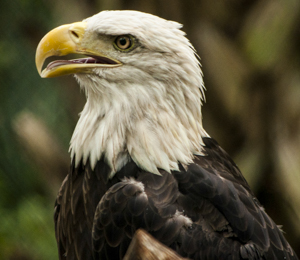
Florida offers a wide variety of outdoor activities from coast to coast, surfing, scuba diving, golf, sport fishing, birding and boating to hiking, hunting or camping, there are countless opportunities to explore. Of course, there are those miles of unspoiled beaches - the perfect place to just lay back, relax and do nothing!
Official Florida State Symbols
- State Animal - Florida Panther
- State Bird - Northern Mockingbird
- State Marine Mammal - Manatee
- State Saltwater Mammal - Bottlenose Dolphin
- State Tree - Sable Palm
- State Flower - Orange Blossom
- State Wildflower(s) - Coreopsis
- State Saltwater Fish - Sailfish
- State Freshwater Fish - Largemouth Bass
- State Butterfly - Zebra Longwing
Florida State Flag

The Florida state flag is a red diagonal cross on a white background with the round state seal in the center. The states seal shows a shoreline with a Seminole woman spreading flowers with a Sable palm behind her, a steamboat sails in the distance as the suns rays break over the horizon. The border of the seal is inscribed with the words "In God We Trust" on the bottom of the seals border and "Great Seal Of The State Of Florida" on the top of the border.
Tree, Shrub, or Herb
While it's obvious that 60 foot tall plant in your backyard is a tree in many cases this is not as evident, trees may sometimes grow in a shrub-like form with multiple trunks and a shrub may on occassion have a single stem. The folllowing definitions apply to a plants natural mature form.
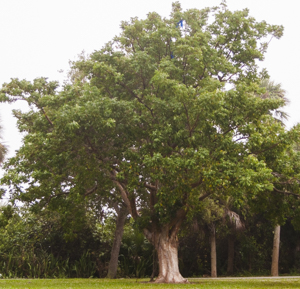
Tree - a single stem or "trunk"
A tree is generally described as "a single stemmed woody plant with a distinct canopy or crown and a height of 15 feet or more at maturity". Trees may occasionally have double or multiple trunks.
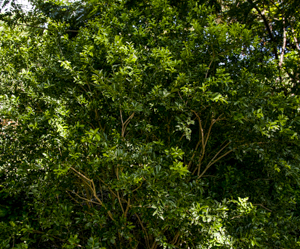
Shrub with multiple stems or trunks
A shrub is also woody stemmed, usually with multiple stems or trunks which rarely or never exceed 13 - 15 feet. In many cases a plant can grow either as a small tree or large shrub. Southern Wax myrtle, a popular landscape plant is an example of a plant that may grow with the form of a shrub OR a small tree.
A sub-shrub also grows with multiple stems, the difference between these and a shrub are that only the base of the stems are woody, the top growth of the plant is herbaceous and often dies back annually.
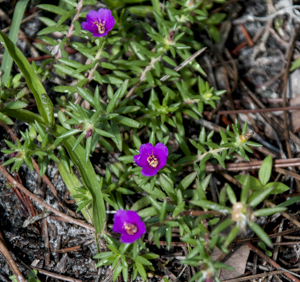
Forb
Forbs (or phorbs), are herbaceous flowering plants that are not grass-like, these smaller plants have no hard, woody stems, they may be annual, bi-annual or perennial. These can have single or multiple stems and are under 5 feet tall.
Many of Florida's wildflowers are forbs and are found in the wildflower section of this website, they are sorted by their colors. The state's offical wildflowers are the twelve native members of the Coreopsis species.
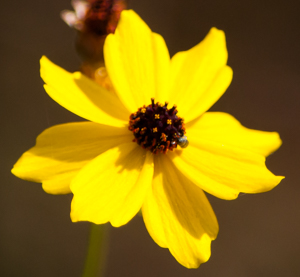
Fringeleaf Tickseed - Coreopsis integrifolia
Introduced Exotic Plants and Animals
Trees and other plants that existed here prior to the first European contact and naturally occurring in the wild and apart from human influence are considered true natives.
There are more than 67 introduced plants that are considered invasive, these exotics overwhelm and crowd out the native plants causing extensive damage to natural ecosystems. Many of these were introduced to the state as landscape plants and have escaped from cultivation by way of seeds or spores being spread by way of animals, birds and human activity.
Unfortunately there is also a quickly growing list of exotic reptiles, amphibians, invertebrates and insects that are causing serious environmental and economic harm, the most well known of these are Burmese pythons that in recent years have decimated the native mammals, birds and reptiles in South Florida.
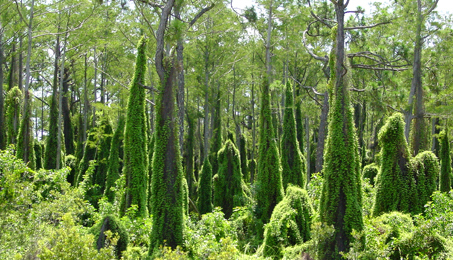
Above - The Old World Climbing Fern (Lygodium microphyllum)is a very fast growing exotic invasive fern that has become a major problem in South Florida woodlands. Spores are easily carried and spread by animals, people or vehicles that travel through infested areas.